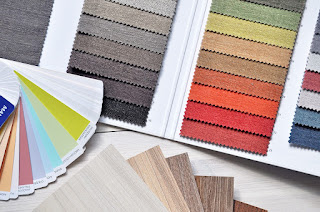Colors in Interior Design
The world of interior design is a canvas where colors play a pivotal role in shaping the ambiance, mood, and visual appeal of a space. Color palettes serve as the foundation of interior design, influencing the overall atmosphere and character of a room. Let's explore the significance of color palettes in interior design and how they can transform living spaces.
Understanding Color Psychology:
Colors have the power to evoke emotions, influence perceptions, and create distinct atmospheres within a room. Each hue carries its own psychological impact:
- Warm Colors: Shades like reds, oranges, and yellows are considered warm tones. They evoke feelings of energy, warmth, and vibrancy, making them ideal for spaces where sociability and stimulation are desired, such as dining areas or living rooms.
- Cool Colors: Blues, greens, and purples fall under the cool spectrum. These colors tend to create a calming, serene environment, perfect for bedrooms, bathrooms, or areas meant for relaxation and concentration.
- Neutral Colors: Whites, grays, and browns serve as versatile neutrals that complement any color scheme. They can act as a backdrop for bolder colors, create a sense of balance, and contribute to an airy, sophisticated feel.
Creating Harmonious Color Palettes:
Interior designers often use color theory principles to create cohesive and aesthetically pleasing color schemes:
- Monochromatic: Utilizing various shades and tints of a single color creates a harmonious, sophisticated look. For instance, different shades of blue can be employed to establish depth and interest in a room.
- Analogous: This scheme involves selecting colors that are adjacent to each other on the color wheel. For instance, combining green, yellow-green, and yellow can create a calming and visually appealing palette.
- Complementary: Pairing colors that are opposite each other on the color wheel, such as blue and orange or red and green, creates a vibrant and high-contrast look.
- Triadic: This scheme involves using three colors equidistant from each other on the color wheel, providing a balanced yet dynamic palette.
Using Color Palettes to Define Spaces:
Color palettes can delineate different areas within a home:
- Open Floor Plans: Employing a consistent color scheme throughout an open space can maintain visual continuity while using different hues to define distinct zones like living, dining, and kitchen areas.
- Accent Walls and Features: Introducing a pop of color through an accent wall, furniture, or decor pieces can add visual interest and focal points to a room without overwhelming the space.
Adapting to Trends and Personal Style:
Interior design trends often influence color palettes, but personal preferences should also be considered:
- Trends: Staying updated with current color trends can be inspiring, but it's essential to balance trends with timeless elements to ensure a lasting design.
- Personal Style: Understanding your own preferences and how certain colors make you feel is crucial. Incorporate colors that resonate with your personality and contribute to a space where you feel comfortable and at ease.
Conclusion:
Color palettes are the cornerstone of interior design, offering endless possibilities to create diverse atmospheres and aesthetics within a home. By understanding color psychology, applying color theory principles, and balancing trends with personal style, homeowners and designers can craft spaces that are visually captivating, emotionally stimulating, and reflective of individual tastes and preferences.

Comments
Post a Comment